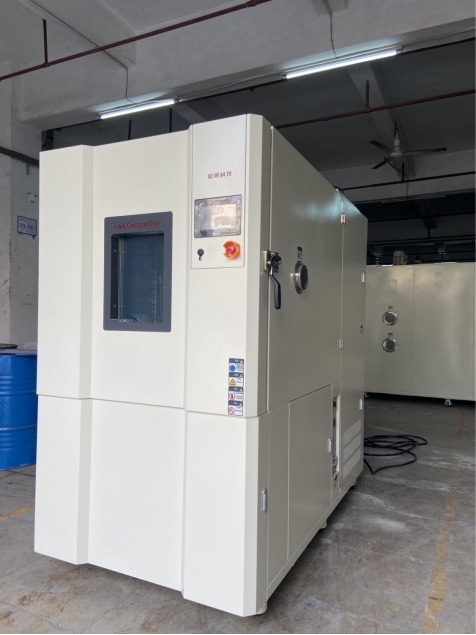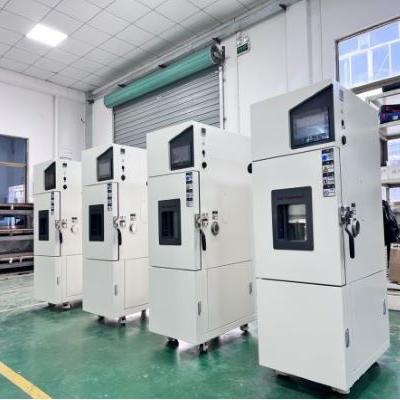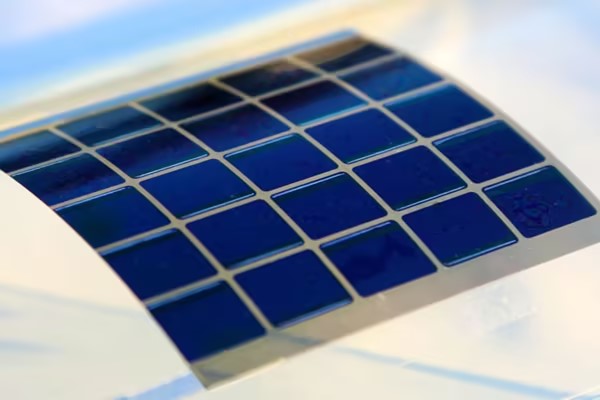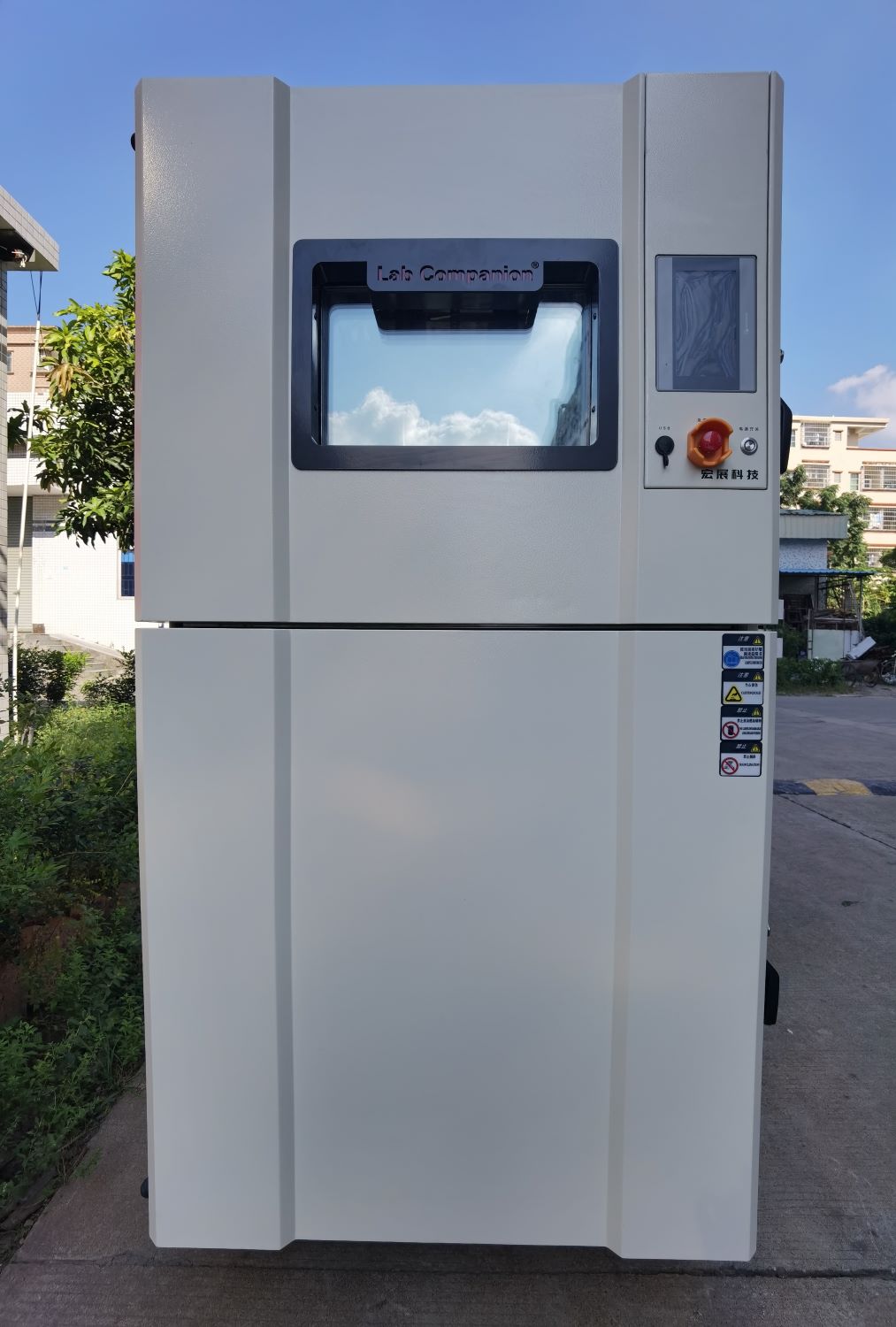IEC 60068-2 Combined Condensation and Temperature and Humidity Test
In the IEC60068-2 specification, there are a total of five kinds of humid heat tests. In addition to the common 85℃/85%R.H., 40℃/93%R.H. fixed-point high temperature and high humidity, there are two more special tests [IEC60068-2-30, IEC60068-2-38], they are alternating wet and humid cycle and temperature and humidity combined cycle, so the test process will change temperature and humidity. Even multiple groups of program links and cycles applied in IC semiconductors, parts, equipment, etc. To simulate the outdoor condensation phenomenon, evaluate the material's ability to prevent water and gas diffusion, and accelerate the product's tolerance to deterioration, the five specifications are organized into a comparison table of the differences in the wet and heat test specifications, and the main points of the test are explained in detail for the wet and heat combined cycle test, and the test conditions and points of GJB in the wet and heat test are supplemented.

IEC60068-2-30 alternating humid heat cycle test
Note: This test uses the test technique of maintaining humidity and temperature alternations to make moisture permeate into the sample and produce condensation (condensation) on the surface of the product to confirm the adaptability of the component, equipment or other products in use, transportation and storage under the combination of high humidity and temperature and humidity cycle changes. This specification is also suitable for large test samples. If the equipment and the test process need to keep the power heating components for this test, the effect will be better than IEC60068-2-38, the high temperature used in this test has two (40 °C, 55 °C), the 40 °C is to meet most of the world's high temperature environment, while 55 °C meets all the world's high temperature environment, the test conditions are also divided into [cycle 1, cycle 2], In terms of severity, [Cycle 1] is higher than [Cycle 2].
Suitable for side products: components, equipment, various types of products to be tested
Test environment: the combination of high humidity and temperature cyclic changes produces condensation, and three kinds of environments can be tested [use, storage, transportation ([packaging is optional)]
Test stress: Breathing causes water vapor to invade
Whether power is available: Yes
Not suitable for: parts that are too light and too small
Test process and post-test inspection and observation: check the electrical changes after moisture [do not take out the intermediate inspection]
Test conditions: humidity: 95% R.H. warming] after [humidity maintain (25 + 3 ℃ low temperature - - high temperature 40 ℃ or 55 ℃)
Rising and cooling rate: heating (0.14℃/min), cooling (0.08~0.16℃/min)
Cycle 1: Where absorption and respiratory effects are important features, the test sample is more complex [humidity not less than 90%R.H]
Cycle 2: In the case of less obvious absorption and respiratory effects, the test sample is simpler [humidity is not less than 80%R.H.]
IEC60068-2-30 Alternating temperature and humid test (condensation test)
Note: For component types of parts products, a combination test method is used to accelerate the confirmation of the test sample's tolerance to degradation under high temperature, high humidity and low temperature conditions. This test method is different from the product defects caused by respiration [dew, moisture absorption] of IEC60068-2-30. The severity of this test is higher than that of other humid heat cycle tests, because there are more temperature changes and [respiration] during the test, and the cycle temperature range is larger [from 55℃ to 65℃]. The temperature variation rate of the temperature cycle also becomes faster [temperature rise :0.14℃/min becomes 0.38℃/min, 0.08℃/min becomes 1.16 ℃/min]. In addition, different from the general humid heat cycle, the low temperature cycle condition of -10℃ is increased, which accelerates the breathing rate and makes the water condensing in the gap of the substitute icing. Is the characteristic of this test specification, the test process allows power and load power test, but can not affect the test conditions (temperature and humidity fluctuation, rising and cooling rate) because of the heating of the side product after power, due to the change of temperature and humidity during the test process, but the top of the test chamber can not condenses water droplets to the side product.
Suitable for side products: components, metal components sealing, lead end sealing
Test environment: combination of high temperature, high humidity and low temperature conditions
Test stress: accelerated breathing + frozen water
Whether it can be powered on: it can be powered on and external electric load (it can not affect the conditions of the test chamber because of power heating)
Not applicable: Can not replace moist heat and alternating humid heat, this test is used to produce defects different from respiration
Test process and post-test inspection and observation: check the electrical changes after moisture [check under high humidity conditions and take out after test]
Test conditions: damp temperature and humidity cycle (25 ↔ 65 + 2 ° C / 93 + 3% r.h.) - low temperature cycle (25 ↔ 65 + 2 ℃ / 93 + 3% r.h. -- 10 + 2 ° C) X5 cycle = 10 cycle
Rising and cooling rate: heating (0.38℃/min), cooling (1.16 °C/min)
GJB150-o9 humid heat test
Description: The wet and heat test of GJB150-09 is to confirm the ability of equipment to withstand the influence of hot and humid atmosphere, suitable for equipment stored and used in hot and humid environment, equipment prone to high humidity storage or use, or equipment may have potential problems related to heat and humidity. Hot and humid locations may occur throughout the year in tropical areas, seasonal occurrences in mid-latitudes, and in equipment subjected to comprehensive changes in pressure, temperature and humidity. The specification specifically emphasizes 60 ° C /95%R.H. This high temperature and humidity does not occur in nature, nor does it simulate the humid and thermal effect after solar radiation, but it can find potential problems in the equipment. However, it is not possible to reproduce complex temperature and humidity environments, assess long-term effects, and reproduce humidity effects associated with low humidity environments.


